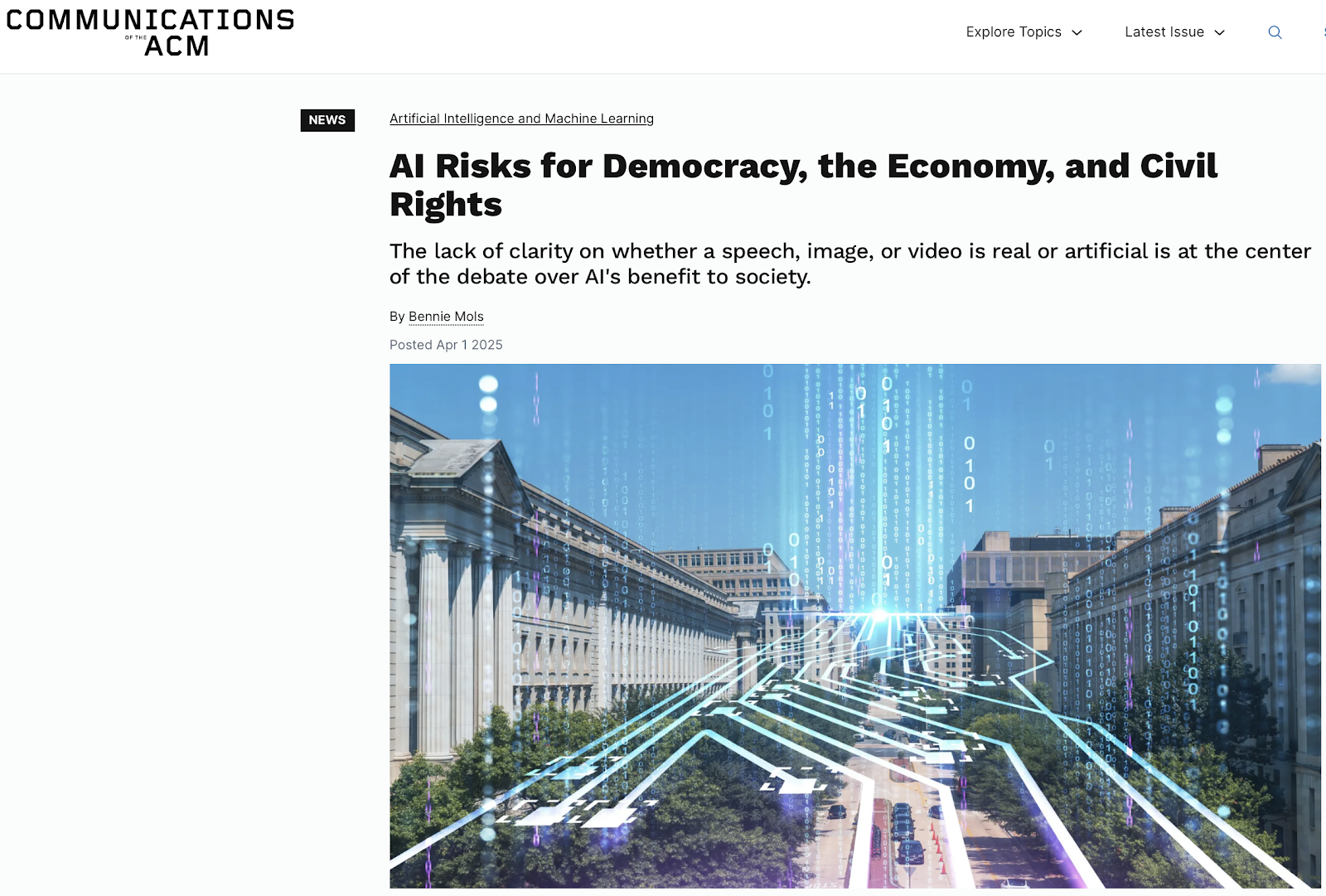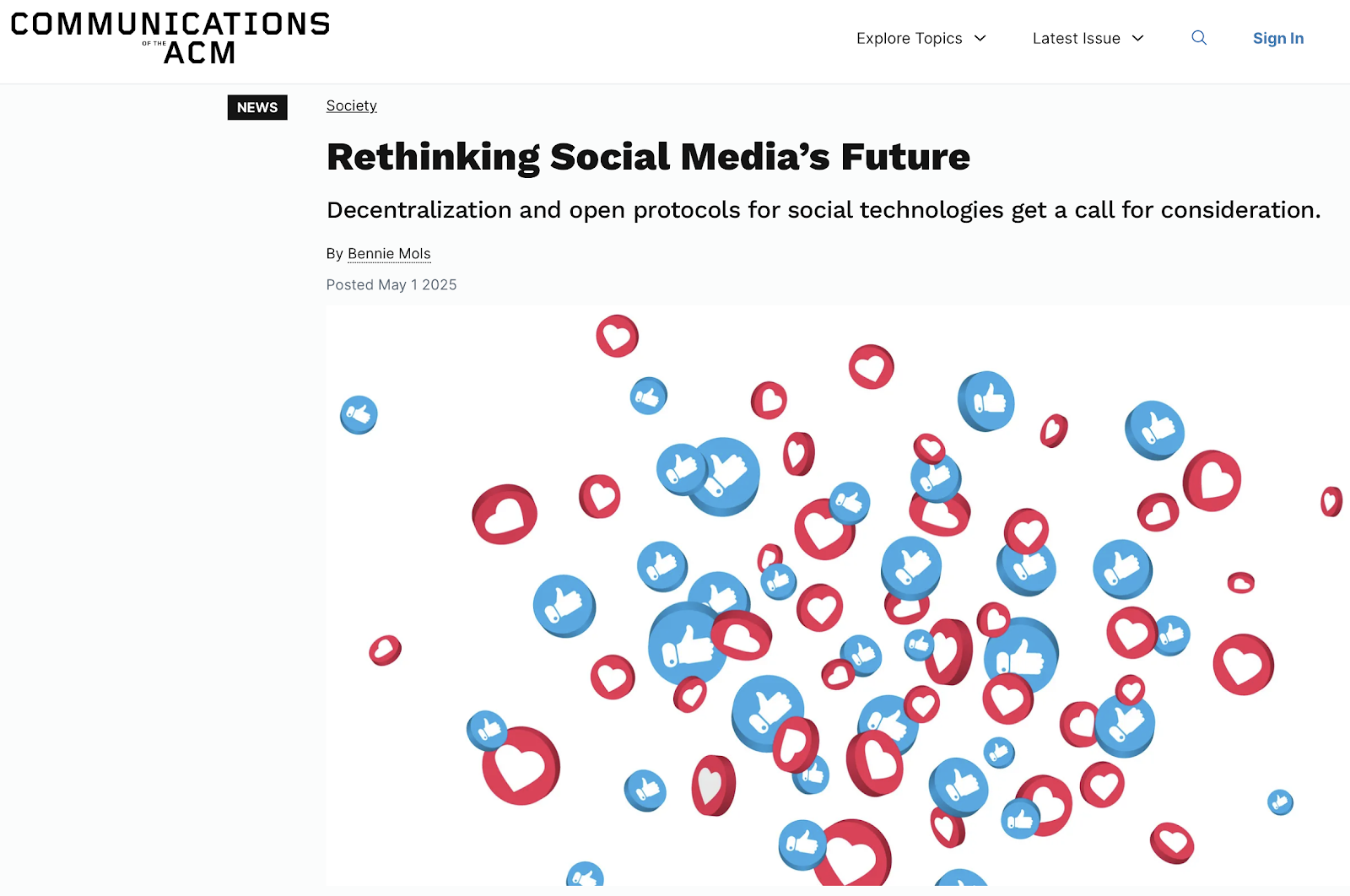Dit artikel is op 13 oktober 2025 gepubliceerd door het platform Beste-ID en is ook hier te lezen.
Op 30 november is het precies drie jaar geleden dat het Amerikaanse bedrijf OpenAI ChatGPT lanceerde. Slechts drie jaar, want het lijkt alweer een eeuwigheid geleden, zo snel went het gebruik. Inmiddels raadplegen wereldwijd ruim zevenhonderdmiljoen mensen minstens een keer per week deze AI-chatbot. Talloze vergelijkbare chatbots zijn inmiddels in het digitale landschap opgebloeid, zoals Gemini, Claude en Mistral. Allemaal behoren ze tot de familie van ‘grote taalmodellen’, AI-modellen die uit enorme hoeveelheden tekst (en menselijke terugkoppeling) hebben geleerd om zelf nieuwe, natuurlijke zinnen te schrijven en in een dialoog met menselijke gebruikers nuttige antwoorden te genereren. Generatieve AI heeft voor een revolutie in onze omgang met informatie gezorgd.
Toch zijn de meningen over generatieve AI in de afgelopen jaren sterk uiteen gaan lopen. Pessimisten zien een onverantwoorde hype, een onbetrouwbare kletsmachine en een instrument dat mensen dom en lui maakt. Optimisten geloven dat kunstmatige mensachtige intelligentie om de hoek ligt en dat AI de mens ongekend productief gaat maken.
Als we even wat dieper graven in de wetenschappelijke kant van generatieve AI, wat hebben we dan in de afgelopen drie jaar geleerd over haar sterke en zwakke punten? En wat zegt dit over hoe we met generatieve AI moeten omgaan?
Allereerst hebben grote taalmodellen zich ontwikkeld tot algemene, veelzijdige AI-modellen omdat ze niet meer alleen zijn getraind op teksten, maar ook op video en audio, op wiskunde en andere wetenschappen, en zelfs op computercode.
Daarnaast zijn grote taalmodellen zoals ChatGPT uitgegroeid tot veel meer dan domme woordvoorspellers. Te pas en te onpas is de metafoor ‘toevalspapegaai’ (stochastic parrot) gebruikt om te beweren dat ChatGPT alleen maar bestaande patronen in taal zou napraten. Een van de interessantste inzichten van de afgelopen jaren is echter dat zuiver en alleen uit het voorspellen van woorden (of tekens) emergente en generieke vaardigheden ontstaan die nooit expliciet in het model zijn gestopt, zoals rekenen, wiskunde, redeneren en programmeren. Verre van perfect, maar in de praktijk vaak nuttig, zeker na menselijke correctie en bijsturing.
Eerder dit jaar losten twee generatieve AI-modellen (van Google en OpenAI) vijf van de zes wiskundeproblemen op van ’s werelds meest prestigieuze wiskundewedstrijd voor middelbare scholieren, de Internationale Wiskunde Olympiade. Het leverde de AI-modellen de gouden medaille op – een fenomenale prestatie die onmogelijk zou zijn door alleen maar een onbetrouwbare kletsmachine of plagiaatrobot.
Een veel gehoorde klacht is dat generatieve AI-modellen vol overtuiging foute en zelfs verzonnen antwoorden kunnen geven (‘hallucineren’). Ja, dat doen ze soms, en ja, daar moeten we ons terdege van bewust zijn. Maar het is geen reden om ze af te serveren. Het toont eerder dat we deze modellen niet moeten zien als feitenmachines, maar als creatieve sparringpartners. Juist in het feit dat ze razendsnel de meest vreemde verbanden kunnen leggen, zit een van hun grote krachten. Het is geen creativiteit met een grote C, geen Kafka of Einstein, maar toch zeker creativiteit met een kleine c. In het voorbijgaan laten deze modellen zien dat creativiteit veel minder mysterieus is dan veel mensen denken. Noch intelligentie, noch creativiteit is uniek menselijk.
De afgelopen drie jaar zijn generatieve AI-modellen met sprongen beter geworden. Ze maken minder redeneerfouten doordat ze leren hun denkproces stap voor stap te verwoorden, een beetje zoals mensen hardop redeneren. En ze maken minder feitelijke fouten omdat ze externe hulpmiddelen kunnen raadplegen, zoals rekenmachines of zoekmachines. De fouten die overblijven, zijn in veel alledaagse situaties te overzien: vaak is het sneller om een imperfect AI-antwoord te verbeteren dan om zelf, via talloze zoekopdrachten, de perfecte oplossing uit te vogelen.
We moeten generatieve AI-modellen niet zien als machines die absolute waarheden produceren, maar als systemen die nuttige waarschijnlijkheden genereren. Hun rationaliteit is beperkt, net zoals de menselijke rationaliteit ook beperkt is, hoewel bij beide op een andere manier. Juist door die beperkte rationaliteit lijken ze meer op mensen dan op traditionele, logisch opererende en foutloze computers.
Om generatieve AI-modellen verstandig te gebruiken, moeten we ons natuurlijk wel bewust zijn van hun beperkingen. Ze hebben – voorlopig althans – nauwelijks begrip van de fysieke wereld, weinig besef van kennis die niet in tekst is vastgelegd, geen intern model van hoe de wereld werkt en slechts een beperkt vermogen om te plannen, te redeneren en conceptueel of causaal te denken.
Hoewel generatieve AI in essentie nog steeds op een motor draait die tekens voorspelt, is die motor dankzij verschillende redeneerachtige hulpmotoren in de afgelopen jaren steeds meer hybride geworden: de papegaai is begonnen te denken. Daardoor kunnen we generatieve AI steeds meer als een slim hulpmiddel gebruiken in het leven van alledag, voor educatie en studie, en in ons werk.
Ondanks terechte kritiekpunten als een relatief hoog energieverbruik en deels illegaal verkregen inhoud, zullen generatieve AI-modellen nooit meer weggaan, zullen ze alleen maar beter en efficiënter worden, en zullen de voordelen de nadelen ver overtreffen. Precies zoals we eerder hebben gezien met de uitvinding van de computer en het internet. Wees pragmatisch: omarm generatieve AI om wat het goed kan, wijs het niet af om de fouten die het maakt, onderhoud cruciale eigen vaardigheden en leer er verstandig mee samenwerken.








